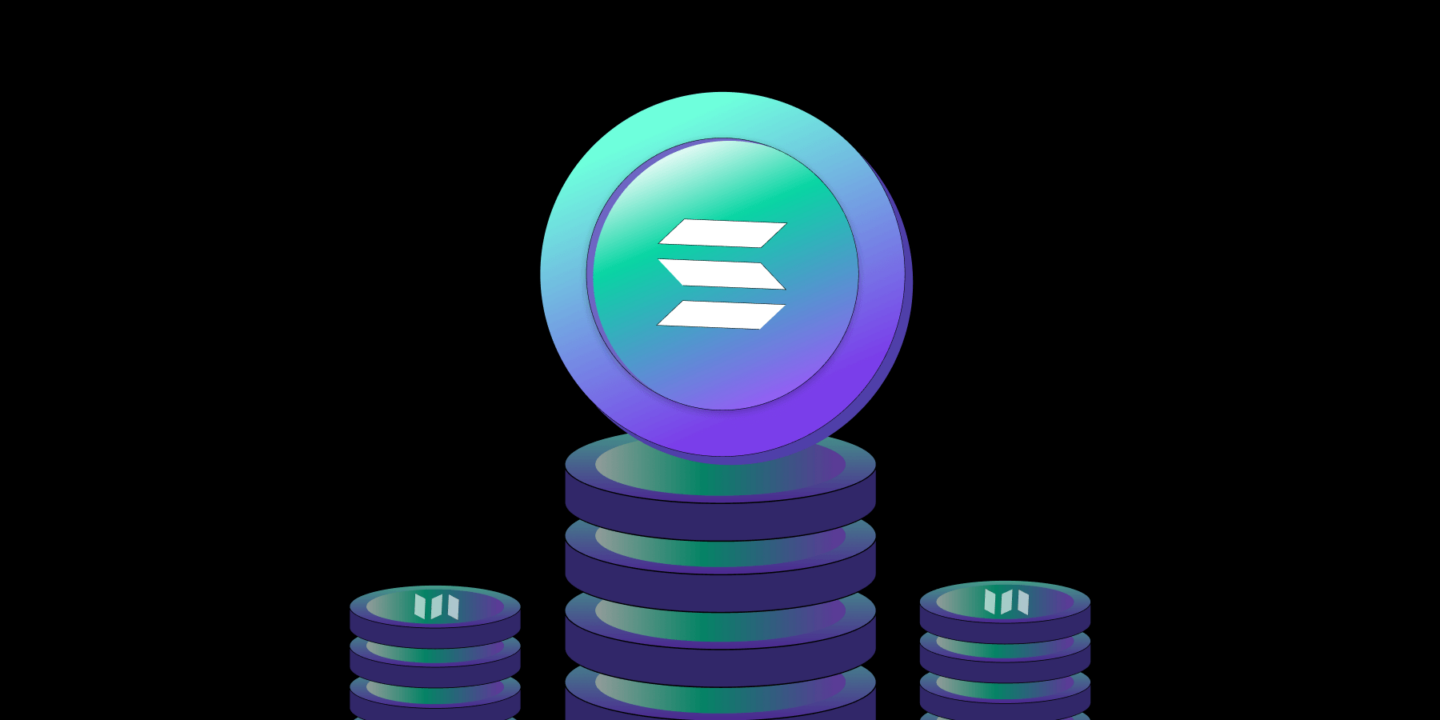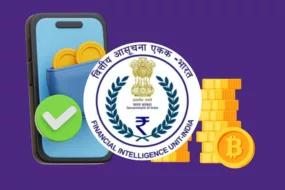
Do you know? The evolution of blockchain can be divided into three generations.
Bitcoin (BTC) is the first-generation blockchain. It provides a secure and decentralized environment for peer-to-peer financial transactions.
Ethereum (ETH) is the second-generation blockchain that introduced smart contracts.
The third-generation blockchain came into the picture mainly to solve the problems (like scalability, interoperability, etc.) plaguing the previous generations, and Solana (SOL) is one of the well-known third-generation projects.
So, what is Solana? Will Solana become the go-to blockchain platform for the developer community?
Let’s find out.
Solana: Definition
Solana is an open-source, layer-one blockchain that focuses on network scalability and speed. It uses a hybrid consensus protocol of Delegated Proof-of-Stake (DPoS) and Proof-of-History (PoH) to process transactions quickly at a low cost. It also has smart contract capabilities that allow it to host decentralized applications.
Solana is often called the “Ethereum Killer” as it was created to solve Ethereum’s scalability issue.
SOL is the native crypto of the Solana network. As of November’22, 362,432,781 SOL are in total circulation, and there is no maximum supply cap on it.
Anatoly Yakovenko, Greg Fitzgerald, Raj Gokul, and Eric Williams created Solana in 2017. Solana Labs, based in San Fransico, is the company behind Solana’s development. Notable crypto-focused VCs, including a16z, ParaFi, Blockchange Ventures, and Polychain Capital, funded the project. The total funding amounts to $336 Million to date.
What Is Solana’s role?
Solana roughly handles 3,500 transactions per second (TPS), costing an average of $0.00025 per transaction. Moreover, the network claims to process up to 50,000 TPS.
It’s much cheaper and faster than the Ethereum protocol. Ethereum can handle between 15 to 45 TPS, and the cost per transaction can vary between $0.0001 to over $100.
Hence, Solana is witnessing increased adoption among the developer community for building decentralized applications (dApps). These applications include DeFi, gaming, social media, payments, marketplaces, etc.
Also, it helps to scale NFTs of all shapes and sizes.
Below is a quick snapshot of the developments in the network as of today.
- Over 20.3 Million NFTs were minted on Solana.
- More than 350 Solana-based projects have been developed.
- The Total Value Locked (TVL) in Solana-based DeFi platforms is over $328 Million.
- 140 DAOs were built on Solana.
If we look into the SOL token, there are three primary use cases.
1. SOL helps pay the transaction fees for using the Solana network or its smart contracts.
2. Users can stake their SOL tokens and receive rewards as part of the consensus mechanism.
3. The DeFi projects built over the Solana blockchain use SOL as their governance token.
What Makes Solana Special?
The unique blend of Delegated Proof-of-Stake (DPoS) and Proof-of-History (PoH) protocols work together to power the Solana blockchain.
Both help the network maintain accurate data across all participants in an energy-efficient manner. Also, they reduce the latency and increase the throughput addressing the scalability issue.
1. Delegated proof of stake (DPoS)
First, let’s look at the working mechanism of the Proof of Stake (PoS) protocol.
Unlike the PoW system, no mining is involved in the PoS mechanism. Instead, users lock a certain number of coins as a stake. They are randomly assigned to verify transactions and add the following block to the network. Users (Validators) with more staked coins have a higher chance of getting validation rights. For every successful validation, validators are rewarded.
The DPoS is a modified version of the PoS system, and it also allows users to stake coins. But they can transfer their responsibilities to a group of witnesses through a voting mechanism. These witnesses act as validators to reach a consensus among themselves. They are also called block producers.
DPoS is more democratic when choosing validators than the PoS system. PoS chooses validators based on the number of coins staked. But, DPoS allows users to vote and select the witnesses based on their reputation and trustworthiness. Only top-tier witnesses with the most votes earn the validation rights. The users also vote to select delegates who govern the protocol.
2. Proof of history (PoH)
PoH is a new concept introduced by Solana. It is not a consensus mechanism but a method to prove that transactions occurred at a specific time.
Before Solana, all public blockchains didn’t rely on a standardized clock. The validator nodes use their local time without the visibility of other nodes’ clocks. Hence, it would take time for the network participants to identify the exact validation time. Luckily, using the PoH method, all network participants can access a single trusted time source.
DPoS helps reduce network congestion, thereby increasing the protocol’s throughput. PoH further improves the network speed by reducing the block time. Block time is the time the miners or validators take to verify transactions within one block and create a new block in that network. For example, the block time for Ethereum is 10 to 15 seconds, whereas Solana takes 400 to 800 milliseconds.
This approach helps scale the Solana blockchain and make it a high-performing network handling thousands of TPS.
How Is Solana Different From Ethereum?
Below is the breakdown of where the two networks overlap and differ.
| Parameters | Ethereum | Solana |
| Launch Date | 2015 | 2020 |
| Native Crypto | ETH | SOL |
| Consensus Mechanism | Transitioned from Proof of Work (PoW) to Proof of Stake (PoS) | Proof of History (PoH) and Delegated Proof of Stake (DPoS) |
| Features | Smart Contract Technology | Enhanced Scalability and Transaction Speed with Smart Contract Functionality |
| Maximum Supply | Not Applicable | Not Applicable |
| Number of Projects | ~3000 | 350+ |
| Smart Contract Functionality | Yes | Yes |
| TVL (Total Value Locked) (As of November ’22) | $24.92 Billion | $328.35 Million |
Solana: Is it a Wise Investment?
Before answering this question, let’s look at the merits and risks associated with the platform.
Solana is excelling by adding immense value to the developer community. It is a highly scalable, low cost and high-speed network compared to its competitors, like Cardano (ADA) and Ethereum (ETH).
Moreover, it’s critical to note that Solana Labs is working on exciting products, as mentioned below.
1. Solana Pay
Solana Pay is an open-source payment protocol built on the Solana blockchain. It allows users to send digital currencies, like USDC, from their wallet to the merchant’s account quickly and cost-effectively.
2. Solana Mobile Stack
Solana Mobile Stack is an open-source toolkit for Android OS. It supports the development of native Android web3 mobile applications.
3. Solana Saga
Solana Saga is the Android Mobile Phone for Web3, expected to launch in early 2023.
If we look into the risk, Solana has faced several network shutdowns. For instance, during May’22, it faced a seven-hour outage as the bots flooded the network to mint NFTs. This generally leads to a loss of value for SOL tokens as the investors dump their holdings during these events. Also, recently, SOL has lost 52% of its value due to its association with FTX.
FTX’s venture capital arm had invested in many Solana-based projects. Hence, SOL is facing the heat even though it doesn’t have anything to do with the FTX debacle. However, we can’t deny the importance of Solana within the crypto space.
The smart approach to invest in Solana would be to invest in the Crypto Blue Chip Coin Set. It allocates funds not only to Solana but to other top cryptos like Bitcoin and Ethereum, too, to balance the risk.
Conclusion
Ethereum was flourishing because of its first-mover advantage. But, the Ethereum network started to congest due to the high volume of transactions. Hence, the crypto community was looking for an effective alternative.
Solana entered the picture at the right time and has now become one of the top crypto projects by adding immense value to the developer community. Going forward, it would be fascinating to see if it becomes an Ethereum killer. Or if Ethereum will maintain its superior position over other blockchains.
FAQs
1. What is proof-of-History?
Proof of History (PoH) is a new concept introduced by Solana. It is not a consensus mechanism but a method to prove that transactions occurred at a specific time. Before Solana, all public blockchains didn’t rely on a standardized clock. The validator nodes used their local time without the visibility of other nodes’ clocks. Hence, it would take time for the network participants to identify the exact validation time. Using the PoH method, all network participants can access a single trusted time source.
2. What is Solana’s purpose?
Solana roughly handles 3,500 transactions per second (TPS), costing an average of $0.00025 per transaction. Moreover, the network claims to process up to 50,000 TPS. It’s much cheaper and faster than the Ethereum protocol. Ethereum can handle between 15 to 45 TPS, and the cost per transaction can vary between $0.0001 to over $100.
Hence, Solana is witnessing increased adoption among the developer community for building decentralized applications (dApps). These applications include DeFi, gaming, social media, payments, marketplaces, etc. Also, it helps to scale NFTs of all shapes and sizes.
3. Which Solana wallets are the best?
Below are some of the best Solana wallets.
- Phantom: Widely used wallet for storing Solana-based NFTs and tokens.
- Solflare Wallet: Another widely used non-custodial Solana wallet to connect with any Solana project. It allows users to simulate transactions to protect against fraud.
- Solong Wallet: An excellent choice for crypto beginners. It’s easy to set up the wallet with Microsoft Edge and Google Chrome extensions.





